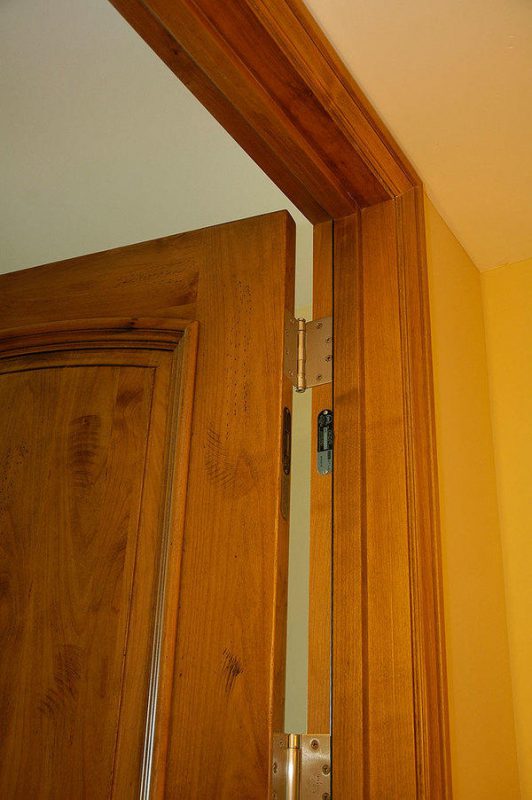Door Fitting, Guides
How to Adjust Doors to Fit Awkward Frames
A door rarely fits perfect 100% of the time; doors and their frames can often drop, rub or sag so here are some handy tips to adjust your door so it swings and shuts properly every time.
Identifying a Dropped Door
When a door drops there could be a number of reasons why, but it is usually because a screw in one of the hinges has become loose. This causes the door to ‘drop’ and the top of the door on the handle side hits the top of the draw frame keeping it from shutting. It can also cause the door to start rubbing on the frame, floor or carpet leaving marks and rubbing off the paint.
A telltale sign of a door that has dropped is that there is an uneven gap around the edge of the door. This can be fixed in a number of way – it can be screwed back in on the current screws but if the thread has worn on the screw it won’t screw tight and new screws are needed. Longer screws could then be used in the hinges to create a more secure fixing decreasing the chances of another drop in the future.
Adjusting a Door
A door can be adjusted by the hinges to get a better alignment if a door springs open when you are trying to close it there could be a number of factors causing this. If when you have chiselled out the recess for the hinges to be placed you have gone too deep it can cause the edge of the door and the frame to bind against each other when the door is being shut. A lot of pressure is put on the screws in the hinges as there is no gap and the door wants to spring open.
To rectify this situation you need to adjust the door either left or right so it sits more central in the door frame. If the recess you have chiselled is too deep then a small thin piece of cardboard behind the hinge will help with a more flush finish and bring the door closer to the frame. If it is the opposite and the hinge isn’t flush enough and the gap between the door and frame is too large, remove the hinges and chop them deeper into the door and or frame to close the gap. If you find that after adjusting the hinges your door is too wide for the frame the door will need to be taken down and have the edges trimmed with a tool called a planer.
A Twisted or Out-Of-Wind Door Frame
If you’re struggling to shut the door and find yourself having to push quite hard for the latch to be located and hold the door shut then you could have a twisted door or out-of-wind door frame. You can spot this defect if you slowly shut the door and when the door touch doorstop at the bottom, the top will have a tapering gap. There are a few ways to resolve this issue the first being move the door frame if you unscrew the frame on the hinge side and pull where the tapering is so it is then re-fixing the frame may fix the problem be prepared for some trial and error.
Another option is for you to move the doorstops, this will allow you to create a bigger opening for the door not to catch. The final option is to throw the hinges, unscrew the top hinges and fill in the screw holes, move the hinge away from the doorstop and then re-fix the hinge to the frame. This should help the door close better without damaging paintwork and the easiest way to adjust a door that is out of wind.


